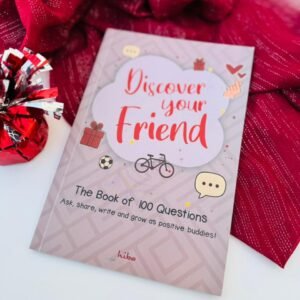Farah Najam gives some tips on children’s toys, preschool selection and early learning … a package to help you and your child at school or at home
Safe learning through toys
- Use recommended age labeling as a guide and look for warnings and other safety messages on toy packaging.
- Consider the home environment and the ages of other, particularly younger, children in the home. A toy intended for an older child may be unsuitable and possibly dangerous in the hands of a younger child.
- Be especially careful when selecting toys for children younger than three. Avoid toys with small parts that could be swallowed or inhaled, including small balls and un-inflated balloons, and those with sharp points or rough edges.
- No matter how old a child is, if he or she is still mouthing objects, be sure toys or pieces of toys are too large to swallow or to become lodged in the mouth or throat.
- Check for sturdy, well-sewn seams on stuffed animals and cloth dolls. Be certain that any decoration is securely fastened and cannot be pulled or bitten off.
What to look for at child care or preschool
- Teachers asking and answering questions, talking and listening to children
- Children read to, at regular times and at children’s request
- Labels on containers, shelves, and other classroom objects
- Children’s ideas and stories written and displayed
- Blocks and other materials for building, sorting, and manipulating
- Opportunities for running, jumping, climbing, and dramatic play
- Learning through activities and projects rather than direct instruction in skills and facts
Games for pre-schoolers
Vocabulary: Teach vocabulary through pictures and objects
I spy game: I spy with my little eye in this class beginning with “b”
Riddles: It flies in the air and has wings. It chirps and loves to eat worms. (Bird)
Memory Game: Teacher shows objects on a tray and then removes few from them, children to guess which are missing.
Mystery Game: In a bag keep things beginning with “b”. Children have to feel and name them. (bat -bell – bottle)
Concepts: large, larger, largest
Art Activity: Painting With Carrots
Cut real carrots with 2-3 pieces. Use them like rubber stamp – dip in orange tempera and print to make a letter c.
A child’s imagination knows no boundaries. It has wings that can fly higher than we could ever imagine! The best way to teach them is to play with them. Our words, actions, gestures are the tools that help them learn and grow into individuals with emotions, perspectives and attitudes.
It goes without saying that our choice of toys will greatly impact the moulding of a child’s personality. For example, a child growing up with books will develop deep intellect and power of reason. A child playing with educational toys will learn to explore and use his motor skills more adeptly. A child playing outdoors, will be a rough and tough one. Similarly kids playing with violent toys, highly stimulating video games etc. will raise restless and reckless adults who lack stability and focus in life.
Another important factor is not just to buy toys for kids but spend some quality time playing with them. Truthfully there is much developmental opportunity for parents and teachers to observe child behaviour and enhance learning just at play. It factually reveals a child’s personality in the making and facilitates grown ups to adjust their parenting styles and attitudes accordingly.

![Great Confrontations (Lessons from Prophet Muhammad's [sa] Battles for Children)](https://hibamagazine.com/wp-content/uploads/2025/10/GC-Cover-300x300.jpeg)

